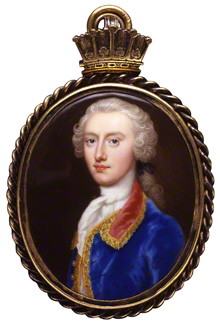
Back William Nassau de Zuylestein Spanish William Nassau de Zuylestein French Guglielmo Enrico di Nassau-Zuylestein, IV conte di Rochford Italian ウィリアム・ナッソー・ド・ザイレステイン (第4代ロッチフォード伯爵) Japanese William Nassau de Zuylestein (1717-1781) Dutch William Nassau de Zuylestein Polish
The Earl of Rochford | |
|---|---|
 Portrait by Christian Friedrich Zincke | |
| Secretary of State for the Northern Department | |
| In office 1768–1770 | |
| Prime Minister | Duke of Grafton |
| Preceded by | The Viscount Weymouth |
| Succeeded by | The Earl of Sandwich |
| Secretary of State for the Southern Department | |
| In office 1770–1775 | |
| Prime Minister | Lord North |
| Preceded by | The Viscount Weymouth |
| Succeeded by | The Viscount Weymouth |
| Leader of the House of Lords | |
| In office 1770–1775 | |
| Prime Minister | Lord North |
| Preceded by | The Viscount Weymouth |
| Succeeded by | The Earl of Suffolk |
| Personal details | |
| Born | 17 September 1717 |
| Died | 29 September 1781 (aged 64) |
William Henry Nassau de Zuylestein, 4th Earl of Rochford, KG, PC (17 September 1717 O.S. – 29 September 1781)[1] was a British courtier, diplomat and statesman of Anglo-Dutch descent. He occupied senior ambassadorial posts at Madrid and Paris, and served as Secretary of State in both the Northern and Southern Departments. He is credited with the earliest-known introduction of the Lombardy poplar to England in 1754.[2]
He was a personal friend of such major cultural figures as the actor David Garrick, the novelist Laurence Sterne, and the French playwright Beaumarchais. George III valued Rochford as his expert advisor on foreign affairs in the early 1770s, and as a loyal and hard-working cabinet minister. Rochford was the only British secretary of state between 1760 and 1778 who had been a career diplomat.
Rochford played key roles in the Manila Ransom negotiation with Spain (1763–66), the French acquisition of Corsica (1768), the Falkland Islands crisis of 1770–1, the crisis following the Swedish Revolution of 1772, and the aftermath of the Royal Marriages Act of 1772. In addition to his work as foreign secretary, he carried a heavy burden of domestic responsibilities in the early 1770s, especially Irish affairs. He was a key member of the North administration in the early phase of the American War of Independence. Illness and a political scandal forced him from office in November 1775.[3]